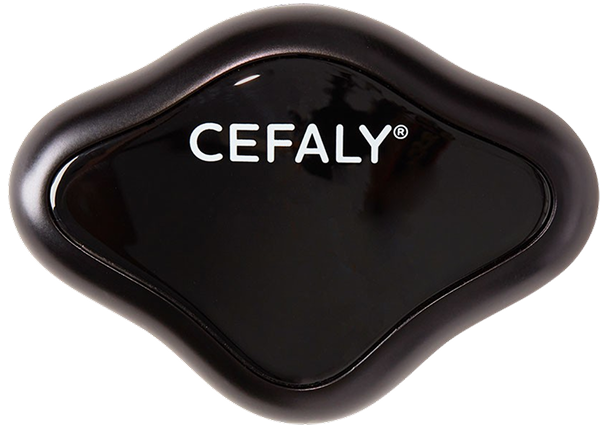Managing pain is essential for people with migraine. Attacks cause severe bouts of pain that can last for hours or days. People can use medications, home remedies and other personalized treatments to limit pain during attacks. However, some remedies might be ineffectual or only partially relieve pain. It can be challenging to find pain-relieving treatments that work consistently.
Cannabidiol (CBD) is one treatment option growing in popularity. CBD is a component of marijuana and hemp plants and can help users achieve a relaxed state of mind. Many people use CBD for pain management and anxiety relief, causing many to wonder whether it could help with migraine attacks. While some promising results suggest CBD can reduce migraine pain, more research is necessary to understand its effectiveness.
What is CBD?
Cannabidiol is an active ingredient in marijuana or hemp plants. It doesn’t contain tetrahydrocannabinol (THC), the psychoactive component of cannabis that induces a high or euphoric feeling. Instead, CBD causes feelings of relaxation, mellowness and increased comfort. Some research suggests CBD can also relieve joint pain and assist with anxiety disorders.
CBD affects pain receptors in the brain, bringing your body to a more relaxed state. Patients have used CBD as a pain-relief treatment for conditions like:
- Arthritis: Studies have shown CBD’s effectiveness in reducing joint pain from arthritis. It can assist with pain relief, physical function and sleep quality.
- Cancer pain: A CBD oil spray is approved to treat cancer pain in Canada.
- Anxiety disorders: Multiple trials and research studies have shown CBD’s benefits for those with anxiety disorders.
You can find CBD in a variety of forms, including:
- Gummies
- Sprays
- Oils or tinctures
- Capsules
- Vapes
Using CBD for migraine relief
As CBD grows in popularity, many wonder if it could assist with migraine pain. CBD has shown promise as a pain reliever for neuropathic pain, which originates in your nervous system. This pain type causes tingling sensations, numbness and sharp throbs of pain, all of which are common migraine symptoms. Because of this correlation, some researchers believe that CBD might help people with migraine.
Benefits of CBD for Migraine
CBD has shown benefits for migraine symptoms like:
- Headache
- Joint or muscle pain
- Nausea
- Inflammation
These positive traits indicate that CBD could help those affected by migraine with pain management. However, research on CBD’s effect on migraines is somewhat limited.
The science behind CBD
CBD relieves pain by interacting with the endocannabinoid system (ECS). This system is responsible for learning and memory, emotional regulation, pain control, inflammation and other bodily functions. CBD stimulates cannabinoid receptors located throughout the body and causes them to reduce inflammation and pain.
Researchers and scientists have conducted a few studies to test CBD’s effectiveness for migraine relief. Many of these studies showed promising results. For instance, a recent study found that 86% of participants found pain relief after using CBD oil. Many users also reported a reduction in migraine attacks by over 30%.
Studies like this and anecdotal evidence suggest that CBD provides valuable assistance for migraine pain management. However, more formal research is necessary to completely understand the connection between CBD and migraines. Additional research can also help medical professionals understand necessary dosages and usage frequency.
Should you use CBD to treat migraine?
If you’re curious about CBD as a migraine treatment, consider some essential factors first. While it shows promise for anxiety relief and some pain relief, there are still many unknowns, such as:
Potential side effects

CBD can bring many benefits, such as reduced pain and feelings of calmness. However, it can also cause potential side effects on your health. For instance, some users have reported negative responses like:
- Dry mouth
- Reduced appetite
- Drowsiness
- Fatigue
- Gastrointestinal issues
- Nausea
If these side effects become too strong, they could detract from CBD’s effectiveness or cause more stress overall. Managing these additional symptoms along with migraine pain could be challenging. However, CBD’s effects on the body vary by person.
In addition, CBD might interact with other medications you take. It’s always best to consult your doctor about CBD before beginning to use it. Further research is necessary to understand the long-term effects of CBD on patients’ health.
Inconclusive research
As mentioned above, CBD research is largely inconclusive, both in general and for migraines. While many users report pain relief and lower anxiety, few scientific studies can back these claims. You might be willing to try CBD and see how it impacts migraine symptoms firsthand. However, if scientific research and approval are important to you, it might be best to wait until CBD displays more comprehensive results.
Doctors and scientists often face limited research opportunities due to CBD legislation and rulings. These laws vary by state and can make obtaining the substance for studies more challenging. It’s ultimately up to your comfort and CBD’s local availability.
Legislation limitations
Lastly, it’s important to understand the legislation restrictions surrounding CBD. The legal status of CBD and other related products varies by state. You should check your state’s cannabis laws and CBD restrictions before seeking out products.
CBD also remains largely unregulated. The lack of regulation and understanding of CBD laws leads to the availability of many impure or unsafe products. Over-the-counter products often don’t have approval from the Food and Drug Administration (FDA) or other health professionals. Additionally, illegal forms could contain harmful additives. You should only purchase CBD in places where it’s legal and when you know the product has a reputable source. That way, you can follow all crucial regulations and remain safe during usage.
Get Drug-Free Migraine Relief With CEFALY
Shop Now
90-day money back guarantee
FDA-cleared
financing available
Get treatment you can count on from CEFALY
CBD has potential pain-relieving qualities for people with migraine, but researchers must gather more evidence to understand all of its effects on those with migraine. If you’re seeking an alternative, clinically proven form of migraine relief, choose CEFALY today.
Our CEFALY Connected device can transform your migraine management approach. Place the device on your forehead, where it uses external trigeminal nerve stimulation (eTNS) to target your trigeminal nerve. eTNS slowly desensitizes this nerve, which is the primary pathway for migraine pain.
The Connected device has two different settings:
- ACUTE treatment: Use the ACUTE setting at the earliest sign of a migraine attack. The device can reduce pain and shorten the attack’s duration.
- PREVENT treatment: Use the PREVENT setting every day to decrease migraine frequency over time.
You can also connect your CEFALY device to the CeCe app for personalized insights into migraine triggers and patterns.
To get started with CEFALY, shop online today.















